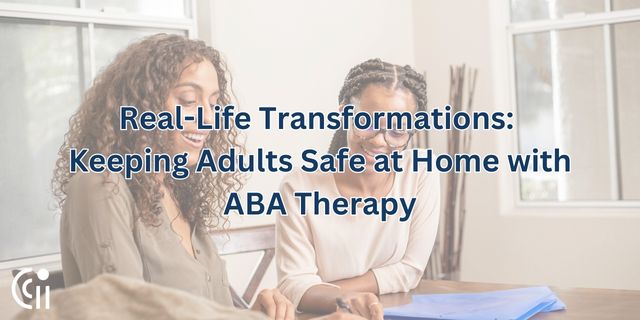Starting Over After a Difficult Experience
Every child’s ABA therapy journey is unique. For one child, the road to progress started with a difficult setback. After experiencing a traumatic event at a previous clinic and going months without therapy, he arrived at Circle City ABA in August.
When we first met, it was clear that trust needed to be rebuilt. He often played alone, flinched when others came near, and engaged in intense behaviors when approached. These were signs that his past experiences left him unsure about new people and what to expect.
Please note: Therapy is a highly personal experience, and, like any other treatment, results are not uniform. Several factors determine whether a child will benefit from therapy, including individual characteristics, the nature of their needs, and the quality of support they receive at home and/or school.
The Importance of Building Rapport
Instead of jumping into teaching, our focus became connection. Our treatment team asked, “What do we need to change about ourselves so this child feels safe and ready to learn?”
We retrained together, using a compassionate and playful approach to rebuild trust and foster a sense of unity. The goal was to make sure he felt “happy, relaxed, and engaged” during every session. That meant slowing down, giving him space, and following his lead in play. Over time, he began to see that therapy at Circle City ABA was different. He started to smile more, accept help, and engage with his team.
Small Changes That Made a Big Impact
At first, even sitting near him felt like too much. If we got too close, he would tense up or pull away. So we started small. We sat beside him quietly, letting him play on his own. No pressure. Just being there.
The first time he allowed us to stay without flinching, it felt like a win. Soon after, he glanced over during play and made eye contact. It was brief, but it was a spark. Then came the moment he pushed a toy toward us, an invitation to join his world.
Each of these moments may have seemed small, but together they told a bigger story: he was beginning to trust us. That trust became the doorway to teaching, to laughter, and to learning new ways of communicating.
Growth in Functional Communication
One of the biggest milestones came with his use of functional communication. At first, frustration often led to challenging behaviors. But as he gained confidence, he began to use communication more independently.
Functional communication is about giving children the tools to express their needs in a way others can understand. For this child, that meant being able to ask for breaks, request items, or share what he wanted—without relying on behaviors that caused stress for him or those around him.
Now, instead of shutting down or reacting with intensity, he uses communication to connect. That’s a powerful change. It not only helps him in therapy sessions but also supports him at home and in the community.
Why This Transformation Matters
This progress is about more than learning skills. It’s about healing. For a child who came to us with trauma tied to therapy, finding joy, trust, and a voice is a life-changing step forward.
It shows that with the right approach—one centered on trust, patience, and connection—children can overcome even the toughest starts. His journey is a reminder that ABA therapy is not just about teaching. It is about building relationships that make learning possible.
How Circle City ABA Can Help Your Family
Every child deserves to feel safe, supported, and understood. At Circle City ABA, we meet children where they are and create a plan that helps them grow in ways that matter most to your family. Whether it’s developing communication skills, building independence, or simply finding joy in learning again, we’re here to help.
If you’re ready to learn more about ABA therapy services, contact Circle City ABA today. Our admissions team can answer your questions and help you take the next step.
Disclaimer: Every child is different. This story reflects the progress of one individual. Outcomes may vary based on several factors, including the child’s unique needs and the level of support they receive.


